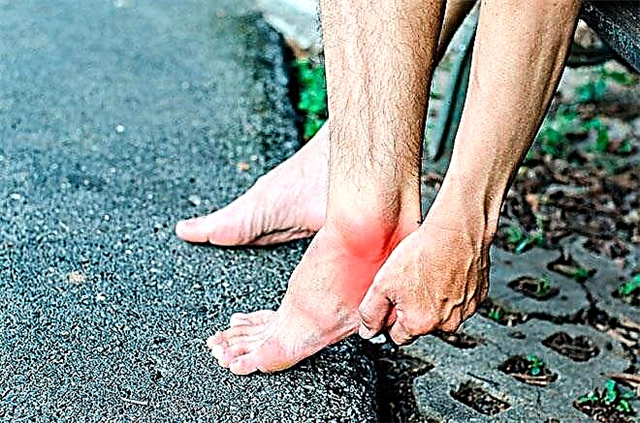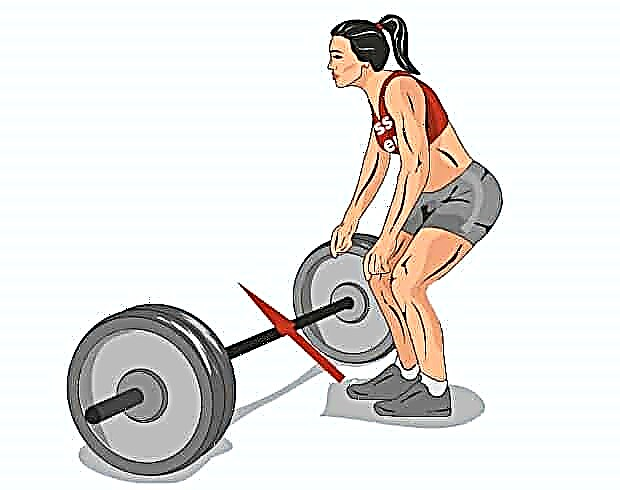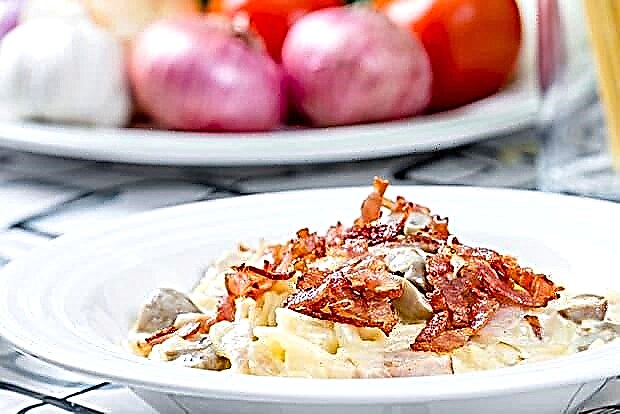Carbohydrates play an important role in proper nutrition and distribution of nutrient balance. People who care about their own health know that complex carbohydrates are preferable to simple ones. And that it is better to eat food for longer digestion and energy during the day. But why is it so? What is the difference between the processes of assimilation of slow and fast carbohydrates? Why should you eat sweets only to close the protein window, while honey is better to eat exclusively at night? To answer these questions, let us consider in detail the metabolism of carbohydrates in the human body.
What are carbohydrates for?
In addition to maintaining an optimal weight, carbohydrates in the human body perform a huge front of work, a failure in which leads not only to obesity, but also a host of other problems.
The main tasks of carbohydrates are to perform the following functions:
- Energy - approximately 70% of calories are carbohydrates. In order for the oxidation process of 1 g of carbohydrates to be realized, the body needs 4.1 kcal of energy.
- Construction - take part in the construction of cellular components.
- Reserve - create a depot in the muscles and liver in the form of glycogen.
- Regulatory - some hormones are glycoproteins in nature. For example, hormones of the thyroid gland and pituitary gland - one structural part of such substances is protein, and the other is carbohydrate.
- Protective - heteropolysaccharides take part in the synthesis of mucus, which covers the mucous membranes of the respiratory tract, digestive organs, and urinary tract.
- Participate in cell recognition.
- They are part of the membranes of erythrocytes.
- They are one of the regulators of blood clotting, as they are part of prothrombin and fibrinogen, heparin (source - textbook "Biological Chemistry", Severin).
For us, the main sources of carbohydrates are those molecules that we get from food: starch, sucrose and lactose.

@ Evgeniya
adobe.stock.com
Stages of the breakdown of saccharides
Before considering the features of biochemical reactions in the body and the effect of carbohydrate metabolism on athletic performance, let us study the process of the breakdown of saccharides with their further transformation into the very glycogen that athletes are so desperately mined and spent during preparation for competitions.

Stage 1 - pre-splitting with saliva
Unlike proteins and fats, carbohydrates begin to break down almost immediately after entering the oral cavity. The fact is that most of the products entering the body contain complex starchy carbohydrates, which, under the influence of saliva, namely the amylase enzyme that is part of its composition, and a mechanical factor are broken down into simple saccharides.
Stage 2 - the influence of stomach acid on further breakdown
This is where stomach acid comes into play. It breaks down complex saccharides that are not affected by saliva. In particular, under the action of enzymes, lactose is broken down to galactose, which is subsequently converted into glucose.
Stage 3 - absorption of glucose into the blood
At this stage, almost all of the fermented fast glucose is directly absorbed into the bloodstream, bypassing the fermentation processes in the liver. The energy level rises sharply and the blood becomes more saturated.
Stage 4 - satiety and insulin response
Under the influence of glucose, the blood thickens, which makes it difficult for it to move and transport oxygen. Glucose replaces oxygen, which causes a protective reaction - a decrease in the amount of carbohydrates in the blood.
Insulin and glucagon from the pancreas enter the plasma.
The first opens the transport cells for the movement of sugar in them, which restores the lost balance of substances. Glucagon, in turn, reduces the synthesis of glucose from glycogen (consumption of internal energy sources), and insulin “holes” the main cells of the body and puts glucose there in the form of glycogen or lipids.
Stage 5 - metabolism of carbohydrates in the liver
On the way to complete digestion, carbohydrates collide with the body's main defender - liver cells. It is in these cells that carbohydrates under the influence of special acids bind into the simplest chains - glycogen.
Stage 6 - glycogen or fat
The liver is able to process only a certain amount of monosaccharides found in the blood. The rising insulin levels make her do it in no time. If the liver does not have time to convert glucose into glycogen, a lipid reaction occurs: all free glucose is converted into simple fats by binding it with acids. The body does this in order to leave a supply, however, in view of our constant nutrition, it “forgets” to digest, and the glucose chains, turning into plastic adipose tissue, are transported under the skin.
Stage 7 - secondary cleavage
If the liver coped with the sugar load and was able to convert all carbohydrates into glycogen, the latter, under the influence of the hormone insulin, manages to store in the muscles. Further, under conditions of a lack of oxygen, it is split back to the simplest glucose, not returning to the general bloodstream, but remaining in the muscles. Thus, bypassing the liver, glycogen supplies energy for specific muscle contractions, while increasing endurance (source - "Wikipedia").
This process is often called the "second wind". When an athlete has large stores of glycogen and simple visceral fats, they will be converted into pure energy only in the absence of oxygen. In turn, the alcohols contained in fatty acids stimulate additional vasodilation, which will lead to better cell susceptibility to oxygen in conditions of its deficiency.
It is important to understand why carbohydrates are divided into simple and complex. It's all about their glycemic index, which determines the rate of breakdown. This, in turn, triggers the regulation of carbohydrate metabolism. The simpler the carbohydrate, the faster it gets to the liver and the more likely it is to be converted to fat.
Approximate table of the glycemic index with the total composition of carbohydrates in the product:
| Name | GI | Amount of carbohydrates |
| Dry sunflower seeds | 8 | 28.8 |
| Peanut | 20 | 8.8 |
| Broccoli | 20 | 2.2 |
| Mushrooms | 20 | 2.2 |
| Leaf salad | 20 | 2.4 |
| Lettuce | 20 | 0.8 |
| Tomatoes | 20 | 4.8 |
| Eggplant | 20 | 5.2 |
| Green pepper | 20 | 5.4 |
However, even foods with a high glycemic index are not able to disrupt the metabolism and functions of carbohydrates in the way that the glycemic load does. It determines how heavily the liver is loaded with glucose when this product is consumed. When a certain threshold of GN (about 80-100) is reached, all calories in excess of the norm will be automatically converted into triglycerides.
Approximate table of glycemic load with total calories:
| Name | GB | Calorie content |
| Dry sunflower seeds | 2.5 | 520 |
| Peanut | 2.0 | 552 |
| Broccoli | 0.2 | 24 |
| Mushrooms | 0.2 | 24 |
| Leaf salad | 0.2 | 26 |
| Lettuce | 0.2 | 22 |
| Tomatoes | 0.4 | 24 |
| Eggplant | 0.5 | 24 |
| Green pepper | 0.5 | 25 |
Insulin and glucagon response
In the process of consuming any carbohydrate, be it sugar or complex starch, the body triggers two reactions at once, the intensity of which will depend on the previously considered factors and, first of all, on the release of insulin.
It is important to understand that insulin is always released into the blood in pulses. This means that one sweet pie is as dangerous for the body as 5 sweet pies. Insulin regulates blood density. This is necessary so that all cells receive enough energy without working in hyper or hypo mode. But most importantly, the speed of its movement, the load on the heart muscle and the ability to transport oxygen depend on the density of blood.
The release of insulin is a natural reaction. Insulin makes holes in all cells in the body that are capable of receiving additional energy, and locks it in them. If the liver coped with the load, glycogen is placed in the cells, if the liver failed, then fatty acids enter the same cells.
Thus, the regulation of carbohydrate metabolism occurs exclusively through insulin release. If it is not enough (not chronically, but one-off), a person may have a sugar hangover - a condition in which the body requires additional fluid to increase blood volume and dilute it with all available means.
The second important factor at this stage of carbohydrate metabolism is glucagon. This hormone determines whether the liver needs to work from internal sources or from external sources.
Under the influence of glucagon, the liver releases ready-made glycogen (not broken down), which was obtained from internal cells, and begins to collect new glycogen from glucose.
It is the internal glycogen that distributes insulin through the cells at first (source - the textbook "Sports Biochemistry", Mikhailov).

Subsequent energy distribution
The subsequent distribution of the energy of carbohydrates occurs depending on the type of constitution, and the fitness of the body:
- In an untrained person with a slow metabolism. When glucagon levels decrease, glycogen cells return to the liver, where they are processed into triglycerides.
- The athlete. Glycogen cells under the influence of insulin are massively locked in the muscles, providing a reserve of energy for the next exercises.
- A non-athlete with a fast metabolism. Glycogen returns to the liver, transported back to the glucose level, after which it saturates the blood to a borderline level. By this, he provokes a state of depletion, since despite the sufficient supply of energy resources, the cells do not have the appropriate amount of oxygen.
Outcome
Energy metabolism is a process in which carbohydrates are involved. It is important to understand that even in the absence of direct sugars, the body will still break down tissue into simple glucose, which will lead to a decrease in muscle tissue or body fat (depending on the type of stressful situation).









